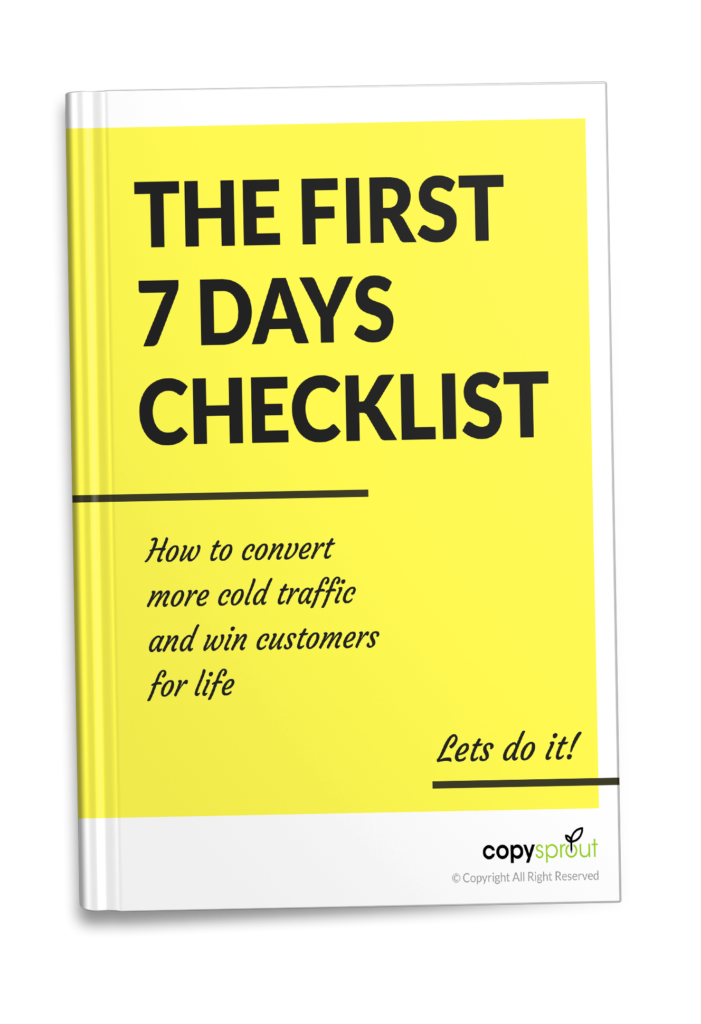When I was a kid, I couldn’t leave the breakfast table until I’d eaten all of my eggs.
Scrambled eggs, which I hated.
So I’d sit there for the longest time, while my eggs went cold. (And the only thing worse than scrambled eggs was cold scrambled eggs.)
Now, as an adult, I get it. My dad was worried I wasn’t eating enough protein, and he didn’t want me to feel hungry later at school.
But as a kid? I hated being forced to eat something I didn’t want to eat. And as a result, I hated eggs even more.
And most of the time, I didn’t really eat them. I’d dig in my heels and wait it out. Eventually, they had to let me leave the table. Or I’d cut up the eggs, scatter them around my plate, and hide pieces under a piece of tortilla, creating the illusion of eaten eggs.
One time when no one was looking, I fed my eggs to Sandy, my loyal golden retriever.
So … if we look at this from a marketing perspective, this egg “campaign” backfired big time. My dad’s goal was for me to eat eggs, but his approach made me hate eggs more than ever.
Flash forward a couple of decades, and I was expecting my own child. And being a health nut with an organic vegetable garden, I wanted to figure out how to raise a kid who eats broccoli and sushi and enchiladas de mole and yes, even eggs. (Which as an adult, I eventually did come to enjoy.)
That’s when I came across a book called French Kids Eat Everything. The premise is that unlike many children in the U.S., French kids eat what adults eat. There isn’t a “children’s menu” in France. (Or anywhere else in Europe, as far as I’ve seen.)
So how do they do that?
Well, first, they never force their kids to eat anything. Instead, from day one, they encourage their children to try foods. And it’s pretty much the same foods the adults are eating.
If the child doesn’t like it? They say, “Oh, okay. You just haven’t tried it enough times.” Or, “Maybe you’ll like it when you’re older.”
Notice the difference? Not only is the food not the enemy, but the parents never say, “Oh, little Olivia doesn’t like sweet potatoes.”
Because that would make it a fact. And you’d stop feeding your kid sweet potatoes. And your kid learns, “I don’t like sweet potatoes,” as though it’s permanent.
(Interestingly, studies show that tastes usually aren’t permanent. The more you’re exposed to a food, the more you develop a taste for it — as long as you’re open to it.)
So you can see how the message is different. Other things French parents do is involve their children in the cooking. Kids start baking a simple yogurt bread even as young as 3, and mostly on their own.
And of course, if you’re 3 and you freaking cooked something yourself, you can bet you’re going to want to try your masterpiece.
In marketing, that’s an involvement device. Sort of like the studies that show that people who assemble their IKEA furniture then feel that their Billy Bookcase is much more valuable than it is.
So these are just a couple of examples, but you can see why this French “marketing campaign” is much more effective.
And as a result of following that advice, my 4-year-old eats broccoli, eggs, sushi, and will try just about anything else. At least one bite.
Encouraged by our success there, I applied the same ideas to teaching her Spanish. Because similar to eggs, the truth is that she doesn’t have to speak Spanish, and she knows it. She lives in an English-dominant country, after all. So forcing the issue would only make her hate the thing that I desperately want her to love.
So I decided that Spanish would be “the fun language” in our home. The language of books she loves, games, a crocodile puppet (“Cocodrilo” only speaks Spanish), her favorite cartoon, apps on the iPad when we travel, music in our Spanish music class, and more.
English is business, Spanish is only ever fun.
(If you’re interested in more on that, I recently was interviewed by Learn With Me Languages about how we’re “marketing” Spanish to our daughter.)
So let’s bring this back to marketing and copy … what are the lessons here?
Well, you can’t start with what YOU want. You have to start with your audience. What do they want? What motivates them? And, what demotivates them?
This might sound like a basic copy/marketing principle, and yet I see marketers get it wrong so often. They’re wholly focused on what they want the audience to do, and not on what the audience wants or needs or feels. And no funnel or quiz or email templates in the world will make up for a mistake that big.
And looking back on my whole egg situation, or la résistance as I’ve come to think of it, I realized the solution was there all along. I didn’t like scrambled eggs, but I did like hard-boiled eggs. So that one little insight into the audience (me) would have seriously boosted the conversion rate (amount of egg eaten in childhood).

